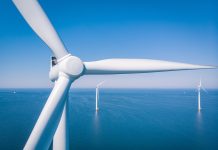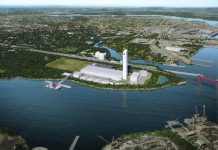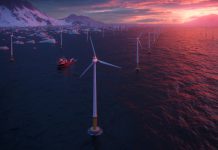As offshore wind continues to drive the industry in Europe and position itself to be a major player in the U.S., site preparation becomes an essential part of any major project.
That site preparation could involve a myriad of moving parts and tasks that must be done before, during, and after a wind farm becomes operational, and James Fisher Renewables is uniquely suited to make sure those jobs are done, and done efficiently, no matter how unusual they may be.
James Fisher Renewables is a part of James Fisher & Sons, which has 174 years of maritime experience and, even though it was founded as a shipping company, its resume of responsibilities includes dealing with ocean-based challenges from transportation and construction to crew transfers and ordnance removal.
“Our history has always been in energy — whether it was transportation of coal in the original vessel fleet, through to construction of heavy lift vessels that were helping to build coal-fired power stations in the U.K. in the ’60s and ’70s,” said Jim Hey, managing director of James Fisher Renewables.
Now, with the globalization of offshore wind, James Fisher has positioned itself to continue to supply its decades-spanning expertise to the implementation of renewable energy in support of the broader energy transition.
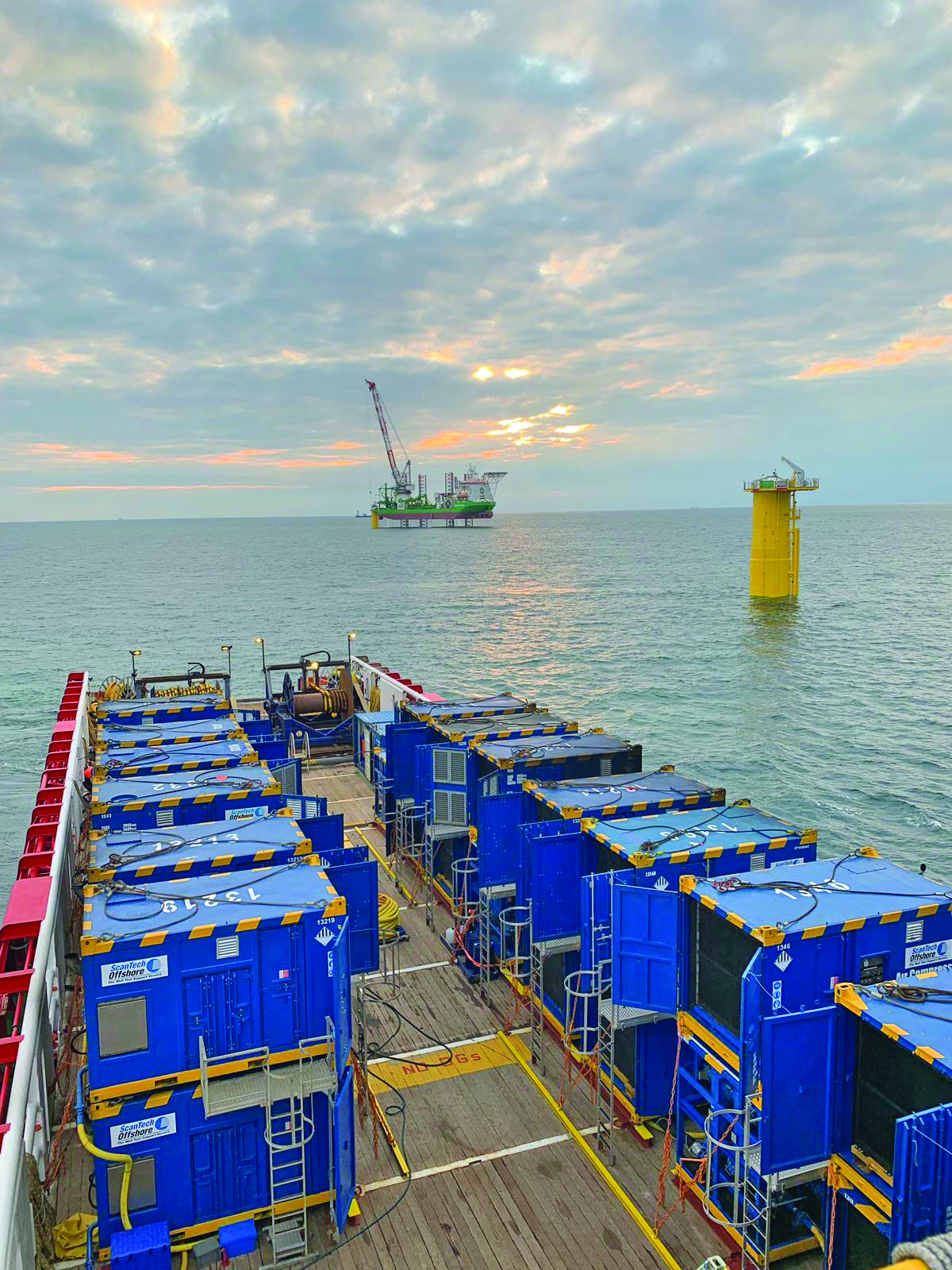
Major Global Expansion
“If you look at the build-out plans across the globe between now and 2030, and 2030 to 2050, we’re going to see an acceleration in Europe; we’re going to see an acceleration in the Asia Pacific; we’re going to see the acceleration in the U.S, and in Brazil and South America, as well,” Hey said. “And as that happens, the market matures very quickly. And we’ve spent a lot of time thinking about what our right is to play in that market. And effectively, we are focusing on reducing the cycle time of building offshore wind farms. That means we are focusing on preparing the ground for large marine industrial installation contractors to come in and build the foundations, install the transition pieces, install the floating foundations, install the turbine, and more.”
That means honing in on areas where James Fisher can support its customers and suppliers by ensuring a site is prepared so the job can be done as efficiently as possible, and the total construction time is reduced, according to Hey.
“What that means in terms of services that we’re focusing on is it’s things like unexploded ordnance removal; it’s things like cable installation; it’s things like high-voltage testing and terminations, high-voltage commissioning, and general subsea support,” he said. “It’s the removal of boulders, protection and excavation of cable crossings, or pipeline crossings. It’s doing the fiddly bits.”
To further make his point, Hey compared what James Fisher does to a factory that manufactures suits.
“You can have machines that cut the cloth, and you can have machines that sew up the suits, but they all have to be hand-finished; to get that suit perfect, it comes off the end of the production line where it’s all done by machine, and it’s done very, very exactly, but somebody has to sew up the loose edges, turn up the trousers, press it, and put it on the hanger,” he said. “That’s really our role.”
Helping to build things quickly
When it comes to construction, James Fisher’s role is to help make it easier for big contractors to build things quickly. When it comes to maintenance, the company focuses on maximizing generation and maximizing the export of products, essentially, according to Hey, providing an emergency response to ensure the product can get to market.
“That means high-voltage maintenance, high-voltage operations, cable repair, blade repair, gearbox oil changes, anything that’s critical to making sure that you can harvest the wind, convert it into power, and get that power to shore,” he said. “If any one of those links breaks, it’s a little bit like a dairy farm. You have to milk the cows every day. And once you’ve got the milk in storage, the tanker’s got to turn up and take that milk to market, otherwise you can’t milk the cows tomorrow, and you’ve got to pour it all down the drain. It’s exactly the same thing for an offshore wind farm. It’s all about harnessing the wind and converting that to power and getting that power to where it’s needed. And if you don’t, the money pipeline stops.”
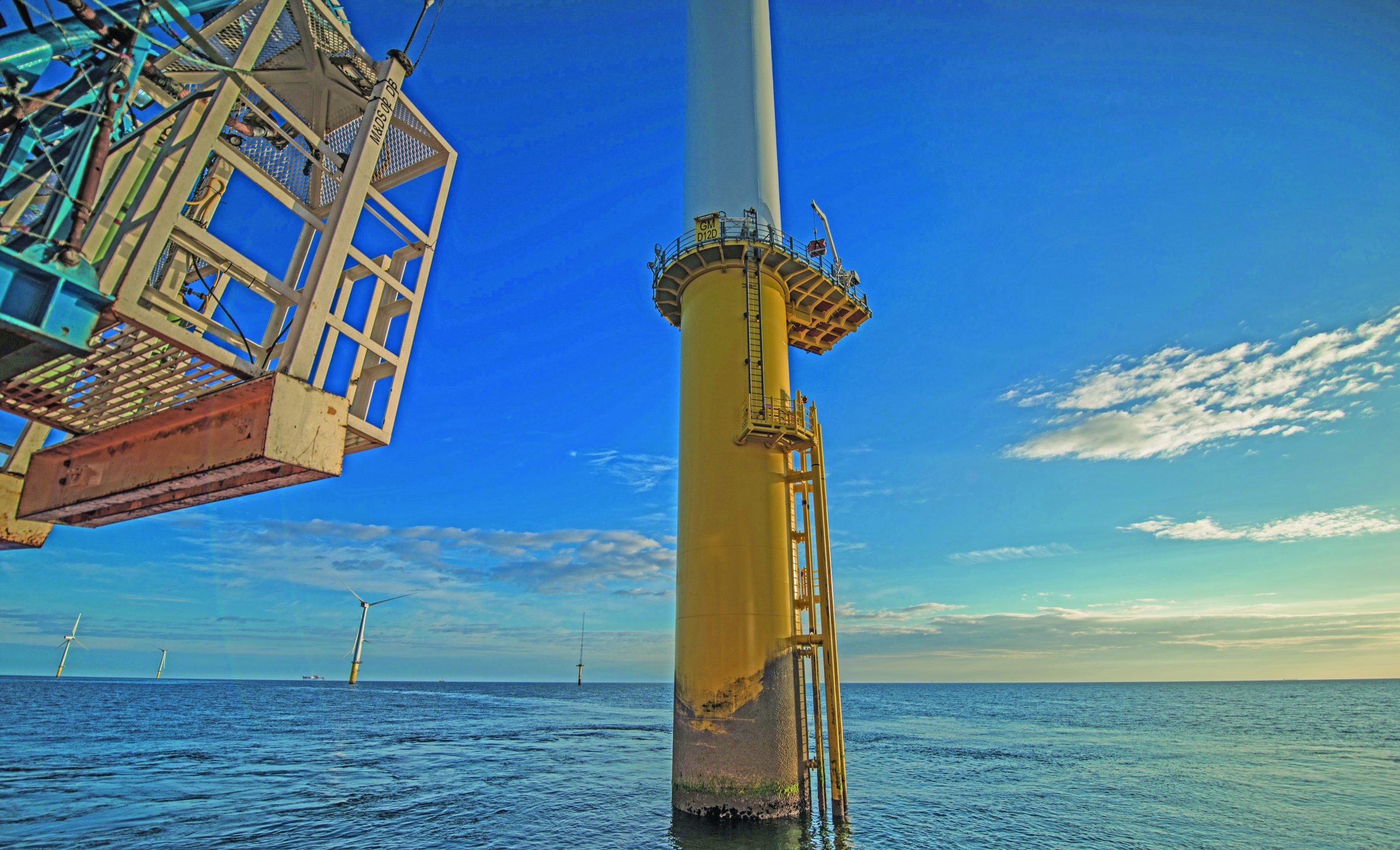
Meeting customers’ challenges
Part of James Fisher’s investment strategy is making sure it has the best people, the best technology, and the best assets in order to focus on cost, time, and risk mitigation, according to Hey, which helps the company be there for whenever a customer needs a solution to a difficult challenge.
“We love that,” he said. “We have a very pioneering and innovative workforce who actually takes the customer’s problems and makes them their own. But typically, we get approached with, if it’s an unplanned event, we will be asked, ‘What’s our view, and how would we approach it?’ And we look for ways in which we can do it faster or more reliably or with low cost assets. We work on a very simple methodology really: The more value we can create for our customers, the more of that value we can retain for ourselves. If we just provide labor, you can’t keep as much value just providing labor. Whereas if you actually say, ‘You know what? I can save you money. I can save you time. I can reduce your risk.’ Then that really is an opportunity for us.”
Unexploded ordnance removal
One of the more fascinating tasks James Fisher has taken on over the years when it comes to site preparation for an offshore wind farm is the removal of unexploded ordnance, much of it left over from World War II and other conflicts, according to Hey.
“If you look where all the wind farms that are being constructed in Europe, they’re in the North Sea, and they’re in the Baltic,” he said. “That was quite a congested site for mines and also aerial bombardment. There is an awful lot of unexploded ordnance. There’s also unexploded ordnance off the East Coast of the U.S. It was never fired or dropped or ports weren’t mined, but at the end of the second World War, the best place it was thought to put unstable explosives was in a nice stable-temperature place where no oxygen could get to it. Guess where that was? Right off the Eastern seaboard.”
Taiwan and Vietnam and the German Baltic also have unexploded ordnance that must be dealt with before serious construction of wind farms can begin, according to Hey.
“You look at all the places that wind is being considered, and, certainly, there is a risk, and, therefore, you have to verify there isn’t any ordnance there, and if there is anything there, you need to deal with it,” he said. “I understand in the Baltic, the German government has made a commitment that they’re going to remove every single piece of (unexploded ordnance) out of the sea whether they’re going to build a wind farm or not. Because you have to think about the chemicals and the propellants. You have to think about the explosive charge; you have to think about the fuses. These aren’t just explosive risks; these are environmental risks. Those are nasty chemicals that leak out over time. And we’re 65, 70 years on, so, are we going to leave them for another 30 years? It’s quite an important area for us because we’ve got a long track record of actually dealing with, finding, identifying, and mitigating the threat from those devices. We’ve got to blow them up, or we’ve got to render them safe and move them.”
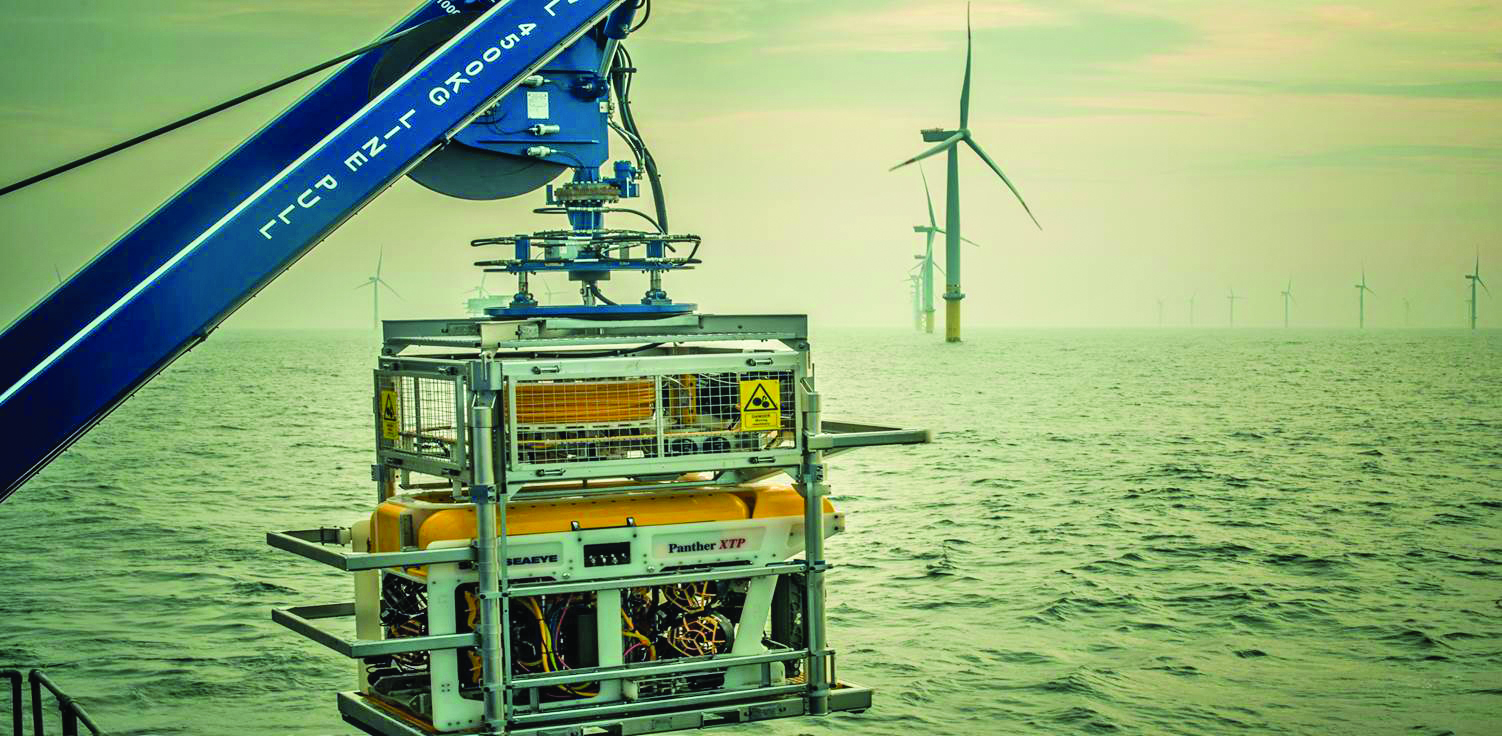
Protecting marine life
In addition to dealing with unexploded ordnance, James Fisher provides air compressors that provide noise attenuation during piling operations, according to Hey.
“That means that, when you’re piling all of these monopiles into the sea, it’s our compressors that are creating a bubble curtain, and the bubble curtain prevents noise from either stunning and killing fish or interfering with cetaceans’ sonar,” he said. “That’s something that we’re very proud of because it’s very consistent with our purpose. We do difficult stuff in very, very challenging environments, but we’re also on a mission to change the world. We want to protect the habitats that we’re working in. We want to mitigate and reduce waste streams. And we want to be part of the transition to the new energy mix. We’re a company that has been around for a very, very long time. And oil and gas has been very much part of our history, and it will still be part of our future as well, because oil and gas aren’t going to go away completely overnight.”
James Fisher also expects to be looking into hydrogen production and what role offshore wind will play, according to Hey, since the company has an established presence in transporting and transferring kerosene and crude oil.
“We’re basically transferring 70 percent of the world’s ship crude oil volumes that are ship-to-ship transfers,” he said. “You get one super tanker with oil on it; you got another super tanker with oil. We do 70 percent of the world’s ship-to-ship transfers. We’re very proud of the fact that we conduct all of those activities, and our environmental record is exemplary, because when handling oil in the sea, you need to make sure that you don’t spill a drop.”
‘It’s a global market’
Now that offshore wind is poised for a major boom in the U.S., Hey said James Fisher has already established itself to be a significant player in its development.
“It’s a global market,” he said. “In the offshore wind supply chain, I would say there are very few medium-size capitalized companies in the offshore wind space. You’ve got large construction contractors; you’ve got large equipment manufacturers, OEMs, and you’ve got large utilities. And then in the supply chain, you’ve got lots of small companies providing local services. We have the luxury in that we’ve got a reasonably-sized balance sheet, and we also are used to operating around the world. We’re already operating in 40 countries worldwide. We’ve been operating in the U.S., particularly in the oil and gas sector — the Gulf of Mexico and Houston — for many, many years.”
Establishing a U.S. presence
With the expected growth rate in the U.S., James Fisher made a calculated bet in November 2020 that offshore wind might accelerate, according to Hey.
“We took the decision to deploy a member of our staff over there (in the U.S.), and we are currently looking to recruit a regional director,” he said. “We’re looking for partners; we’re looking for space, and we will look for acquisitions to build a sustainable business in the U.S. And the skills will be the same. And this isn’t just my personal view on things. There is a lot of learning in Europe that has been created by building offshore wind farms. But, I think it’s a mistake to assume that means that the European contractors can come in and do it all and then leave again.”
In that vein, Hey emphasized that James Fisher’s goal is to create sustainable opportunities in the communities in which it operates.
“We’ve always made a virtue of taking our knowledge that’s developed in Europe and in the U.K. and exporting it overseas,” he said. “We believe there is a need to partner with and employ local people who have got the right skill set and the right attitudes. And we can then work with them to give them the benefit of our experience and actually help those companies and those partnerships flourish.”
With all the expertise James Fisher has under its belt, offshore wind should be in good hands both now and in the future as the company looks to not only ensure renewable energy is generating thousands of megawatts, but making sure the construction of these major projects is done efficiently and safely.
“I think every organization has to be driven toward something, and ours is really focusing on these things like safety and availability, and how do we make a valid contribution?” Hey said. “What is the contribution that we can make? How do we do that well, and as safely and environmentally responsibly as possible?”
















